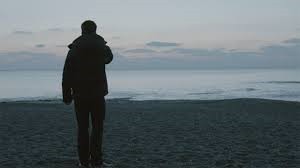ITV celebrated the 50th anniversary of Candid Camera on UK screens with an archive show, originally broadcast on 28 December 2010. Ideal, I thought, for my course on TV history. It was even repeated on 9 September 2011, convenient for the start of term and preservation in the Box of Broadcast (BoB) system to which my beneficent university subscribes (anyone attached to a similarly enlightened UK university can find it at: subscribers can find it HERE.
The programme followed the familiar British formula for an archival TV show. A little light research had yielded some clips and anecdotes as well as an overall premise (‘Candid Camera = the original hidden camera stunts’). The clips were shown to a bunch of ITV celebrities who gave their off-the-cuff reactions. Also in front of the green screen were a couple of survivors from the programme team (Emma Dulay and Peter Funt, the astute preserver of his father Allen’s original vision). The show was given a peak-time slot in the Christmas break, and thinks enough of itself to have generated a detailed IMDB listing. This reveals that the programme team ‘have form’ in this increasingly common genre of TV repurposing.
The level of repetition in this particular show was extraordinary, even for a genre that has exaggerated many of the bad habits of found footage shows (Police, Camera, Action, Kids do the funniest things etc). Before each break, the content of the upcoming segment was anticipated, complete with ‘best bit’ previews. Out of the break, the programme’s basic premise was restated. Once we had fought our way through to the actual material, it was interrupted by the celebs telling us what we had just seen or were about to see, pointers for the harassed audience that this was actually funny. Some Candid Camera fragments appeared four or five times before their sequence was eventually shown. When it came, it was inevitably something of a letdown. The format reminded me of a drunk at a dinner party embarking on a story and getting hopelessly lost, betraying the punchline in the first couple of minutes, but insisting that everyone carry on listening because “really, it will have you in fits”. Oddly, the title sequence shows a number of stunts that are not seen again. There was more archive material, in other words, but priority was given to ITV stars (and Jeremy Kyle) telling us the jokes and wishing “that I’d been alive at the time” (Stephen Mulhern). But we’d seen it all before, just a few minutes ago, before the break… and at the start of the show… and before the break before last if I recall… and maybe even in the middle of a segment…
This amount of repetition is a growing habit. It may sometimes cover a lack of material, but more frequently it betrays a lack of confidence in that material. The show is designed for a distracted form of viewing, very different from that given to drama series. It assumes that anyone watching won’t be there for very long, they will dip in and out, arriving by the chance click of the remote or the randomness of a search menu, and may be doing a lot of other things at the same time. It’s TV for people who have the TV on. But it’s on a commercial channel, so some effort has to be made to retain viewers across the breaks. So promises of delights to come that the material itself might not sustain. There can’t be any surprises in shows like this. The producers are far too aware that there might be no one out there to be surprised.
Maybe I pay more attention to TV (or at least this type of distraction-TV) than I should, but I doubt I’m alone. So what is the solution? Personally, I’d love a means of cutting a show like this down to the 20 minutes or so of original content that lies at its core (not just the archive footage, but some of the interviews as well: even Jeremy Kyle). It can be done, of course, but only at the cost of taking up even more of my time than the original repetitiveness has wasted.
In any case, I’m not sure that this programme’s core premise was right. Hidden away in a book (explanatory note: popular paper-based information system with efficient local search – ‘index’ – which is not exposed to search engines) is Jason Smith’s excellent examination of the evolution of Candid Camera from radio to TV. (‘The Act of Being Yourself’ in Vocal Tracks: Performance in Sound and Media, Univ California Press, 2008, pp165-199) . Smith points out that the stunt aspect of the format was a relatively late development, with Allen Funt insisting on the sociological aspects of his hidden camera observations: he was more Goffman than Garfinkel it seems. Certainly the initial show of the CBS run of the format (2 October 1960) bears this out, with its sequence of people’s funny expressions while they are bowling or of just being helpful. Funt was not all stunt. Hey, did you see that gag coming? Sorry, I guess I should have signposted it a paragraph ago….
Here’s a biog:
JOHN ELLIS is Professor of Media Arts at Royal Holloway University of London. He is the author of Documentary: Witness and Self-revelation (Routledge 2011), TV FAQ (IB Tauris 2007), Seeing Things (IB Tauris 2000) and Visible Fictions (1984). Between 1982 and 1999 he was an independent producer of TV documentaries through Large Door Productions, working for Channel 4 and BBC. He is chair of the British Universities Film & Video Council and leads the Royal Holloway team working on EUscreen. His publications can be found HERE.





